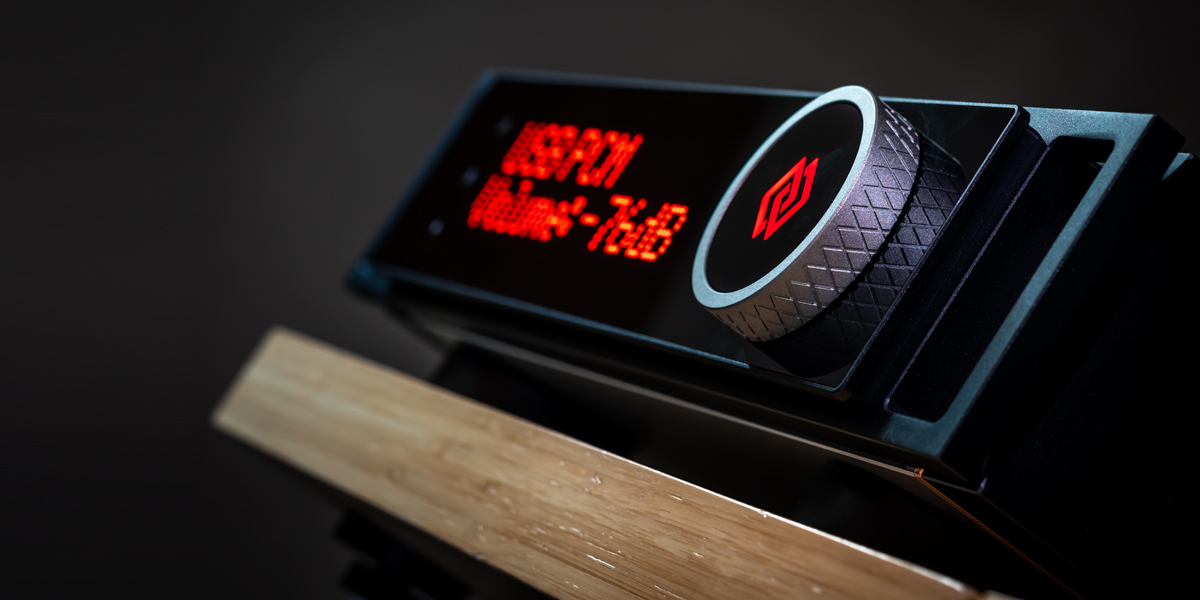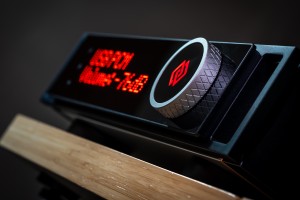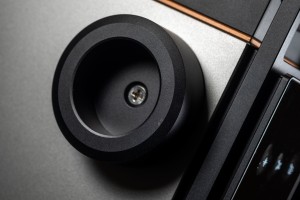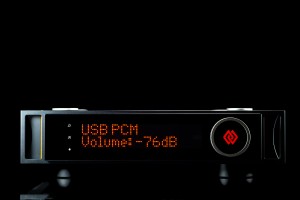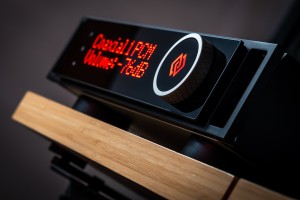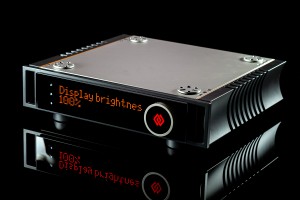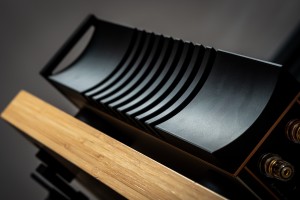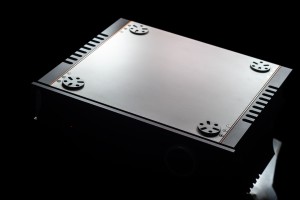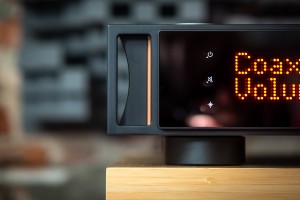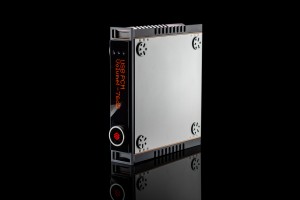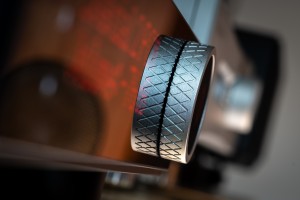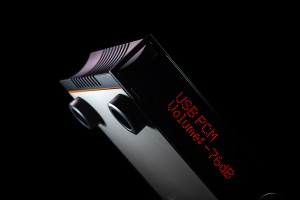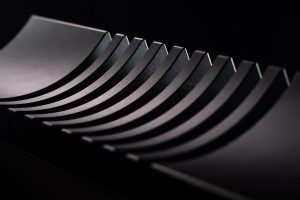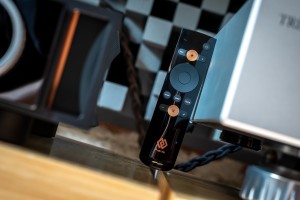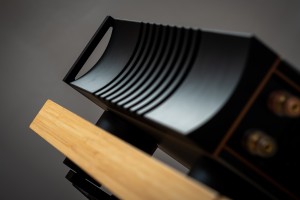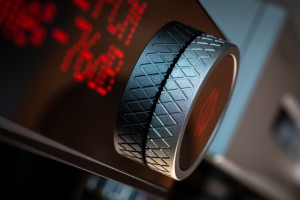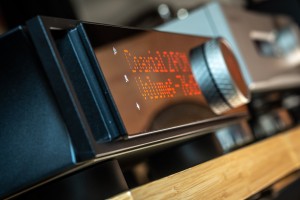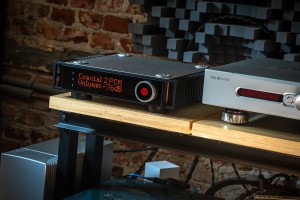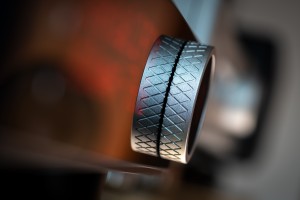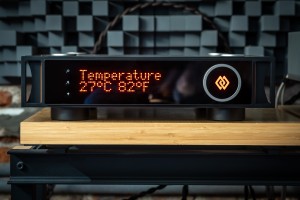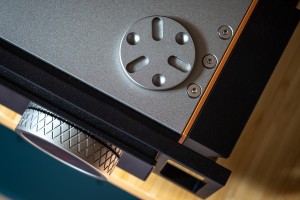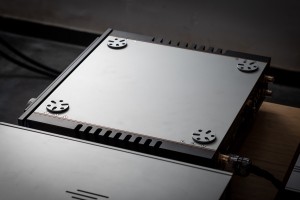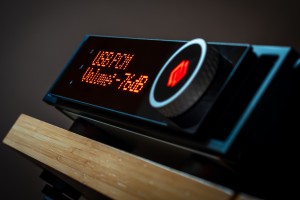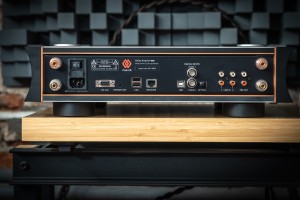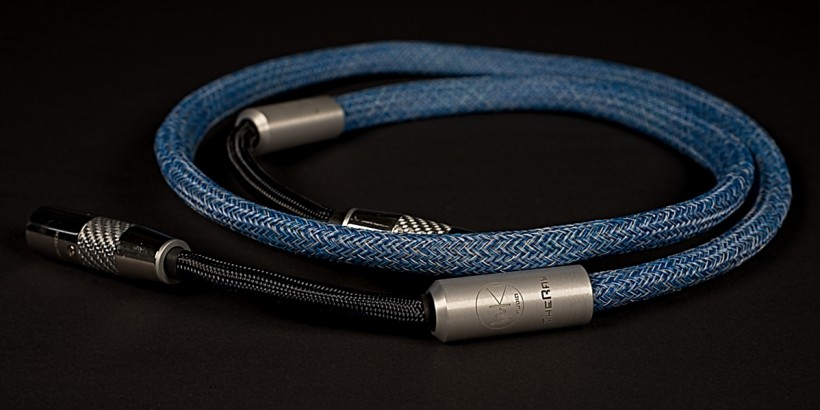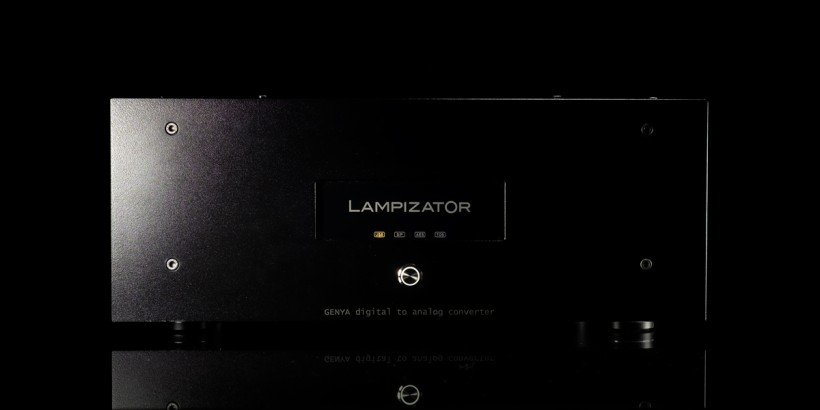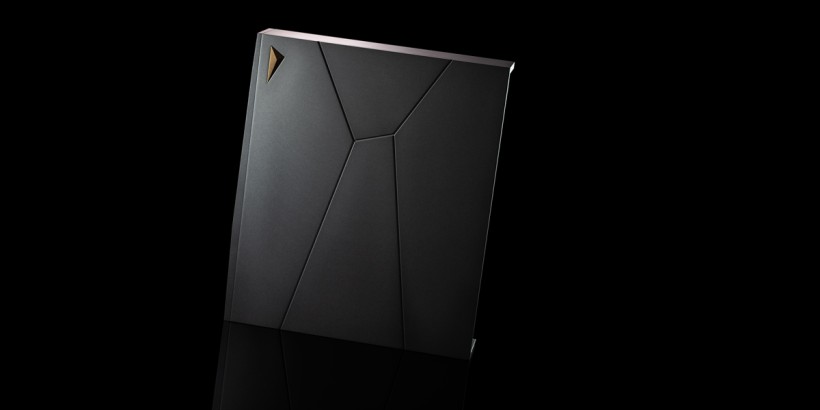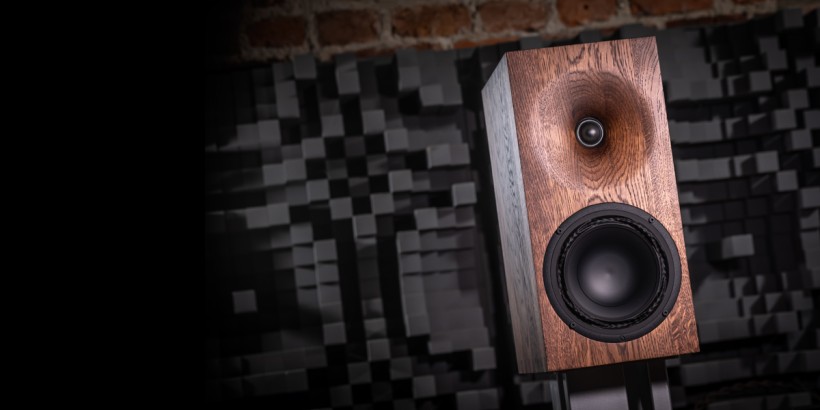Officially launched in late 2023, the flagship Aavik I-880 integrated amplifier determined the new visual styling that its makers want to follow. Aavik U-188 unity amplifier is one of the first designs that benefit from this. Now it’s time to find out whether it also performs accordingly. Enjoy!
The link
When I think about Aavik’s portfolio in a broader context that spans across some 15 years or so, I see three distinct time periods. Odds are that audience familiar with this Danish brand would see the same. Just to get essentials out of the way, Aavik specializes in electronic audio devices, so various preamps, DACs, amps and phonos. Should we wand fitting speakers or accessories for this lot, brands Børresen and Ansuz held under the same parent company Audio Group Denmark respectively cover these bases. In my book Aavik is a special case, however. In this story I wrote that: „…pressed to name just one audio product whose styling impressed more than any other, the discontinued Aavik U-300 would be my first choice even today. It was an AiO packing DAC, phono, pre and power amp inside one fine enclosure. Its matte black exterior with large bores for lateral heatsinks and one massive central control knob made it one spectacular machine. To me the U-300 still shows how handsome and cleverly executed audio hardware can get. Its designers did their job so well that similarly styled chassis started showing up shortly past its launch. To copycats lacking in imagination, imitation is the sincerest form of flattery after all.”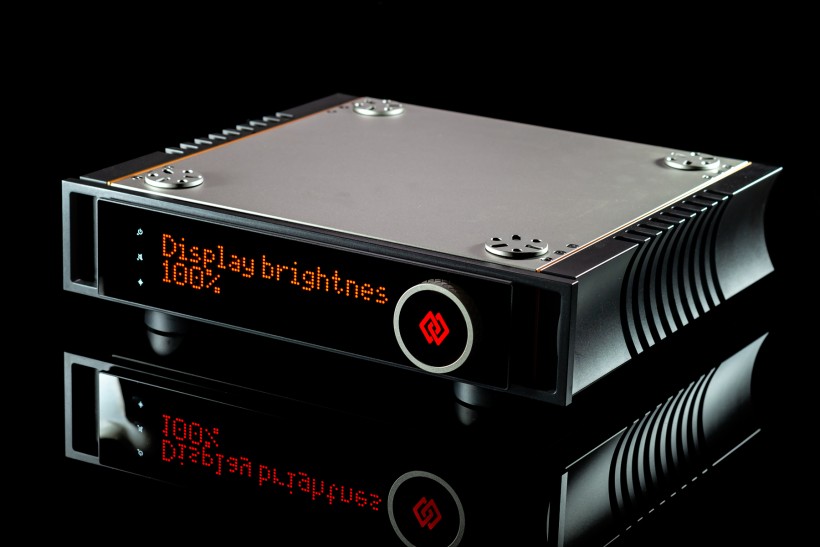 The visually spectacular U-300 and its several as sharply dressed siblings were the company’s earliest efforts that marked its first steps in audio electronics. Then several years later this entire lineup was discontinued in a fairly short time. The key reason was and still is rather unpopular. Even the most expensive electronics available today boast CNC-milled aluminium enclosures. Meanwhile, Audio Group Denmark founders recognized this paramagnetic material to be detrimental to sound quality due to the hysteresis phenomenon. While they appreciated it for its high-quality finish, to them sheer sonic performance was far more important. This is why the second-generation Aavik designs featured wood-based composite enclosures. Higher-tiered models were additionally reinforced with titanium struts and copper internal compartments for the circuitry therein. Although I’ve reviewed quite a few of these 2nd-gen products and enjoyed them all for their sonics, their matte black visually menacing Aavik predecessors still had my vote on looks and premium feel. Fast forward to late 2023, when I finally got my hands on the Aavik I-880 loaner that challenged this private status quo and effectively opened the third chapter in the company’s history. It also looked like a pleasantly familiar art piece only one individual in the entire industry could come up with.
The visually spectacular U-300 and its several as sharply dressed siblings were the company’s earliest efforts that marked its first steps in audio electronics. Then several years later this entire lineup was discontinued in a fairly short time. The key reason was and still is rather unpopular. Even the most expensive electronics available today boast CNC-milled aluminium enclosures. Meanwhile, Audio Group Denmark founders recognized this paramagnetic material to be detrimental to sound quality due to the hysteresis phenomenon. While they appreciated it for its high-quality finish, to them sheer sonic performance was far more important. This is why the second-generation Aavik designs featured wood-based composite enclosures. Higher-tiered models were additionally reinforced with titanium struts and copper internal compartments for the circuitry therein. Although I’ve reviewed quite a few of these 2nd-gen products and enjoyed them all for their sonics, their matte black visually menacing Aavik predecessors still had my vote on looks and premium feel. Fast forward to late 2023, when I finally got my hands on the Aavik I-880 loaner that challenged this private status quo and effectively opened the third chapter in the company’s history. It also looked like a pleasantly familiar art piece only one individual in the entire industry could come up with.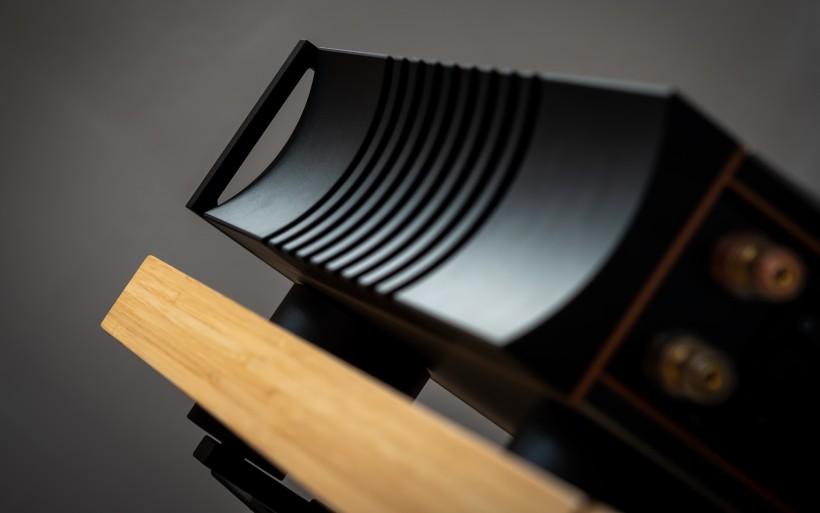 To cut with the suspense, in May 2021 Gryphon founder Flemming Erik Rasmussen joined Audio Group Denmark as the visual design consultant. Since then him and the firm’s CTO/co-founder Michael Børresen were onto something. In early 2023 we got to know what that was, two brand new platforms visually not even remotely similar to the previous Aavik designs. Danes’ latest entry-level AiO effort named Forte was released under the company’s fourth brand Axxess, while the 880 series formed the new top shelf in the Aavik lineup and also marked the brand’s third generation of products. It comes as no surprise that the flagship styling eventually had to trickle down to the ranges positioned lower. Aavik U-x88 is the first commercially available series of this new type and today’s U-188 unity amplifier is its most affordable representative. While priced at €20’000 it is not cheap by any means, in the entire Danish portfolio it is the link between €4’999 Axxess and €67’000 Aavik I-880.
To cut with the suspense, in May 2021 Gryphon founder Flemming Erik Rasmussen joined Audio Group Denmark as the visual design consultant. Since then him and the firm’s CTO/co-founder Michael Børresen were onto something. In early 2023 we got to know what that was, two brand new platforms visually not even remotely similar to the previous Aavik designs. Danes’ latest entry-level AiO effort named Forte was released under the company’s fourth brand Axxess, while the 880 series formed the new top shelf in the Aavik lineup and also marked the brand’s third generation of products. It comes as no surprise that the flagship styling eventually had to trickle down to the ranges positioned lower. Aavik U-x88 is the first commercially available series of this new type and today’s U-188 unity amplifier is its most affordable representative. While priced at €20’000 it is not cheap by any means, in the entire Danish portfolio it is the link between €4’999 Axxess and €67’000 Aavik I-880.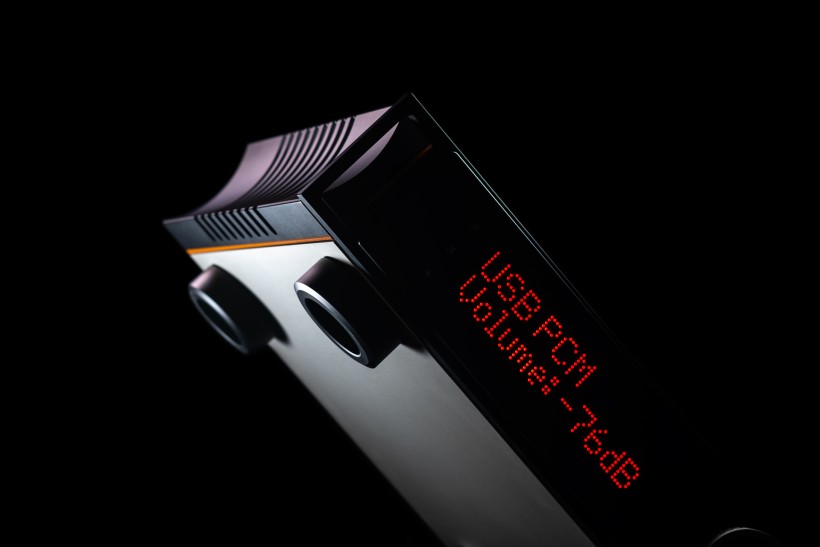 A reasonably compact very robust flight case with locks and reinforcements on its sides revealed the key component secured in foamy liners. Shallow compartments below it nested a handy RC, manual and woolen gloves. For many years Aavik electronics included Apple’s aluminium wand, but that’s in the past. The current remote is a customized controller with magnetized thus easily detachable copper-colored backside where a single AAA battery locates. It also sports enough buttons to operate this report’s Aavik without ever moving from the listening chair. Good stuff if someone asks me. For today’s coin that kind of comfort particularly in an AiO design is expected.
A reasonably compact very robust flight case with locks and reinforcements on its sides revealed the key component secured in foamy liners. Shallow compartments below it nested a handy RC, manual and woolen gloves. For many years Aavik electronics included Apple’s aluminium wand, but that’s in the past. The current remote is a customized controller with magnetized thus easily detachable copper-colored backside where a single AAA battery locates. It also sports enough buttons to operate this report’s Aavik without ever moving from the listening chair. Good stuff if someone asks me. For today’s coin that kind of comfort particularly in an AiO design is expected.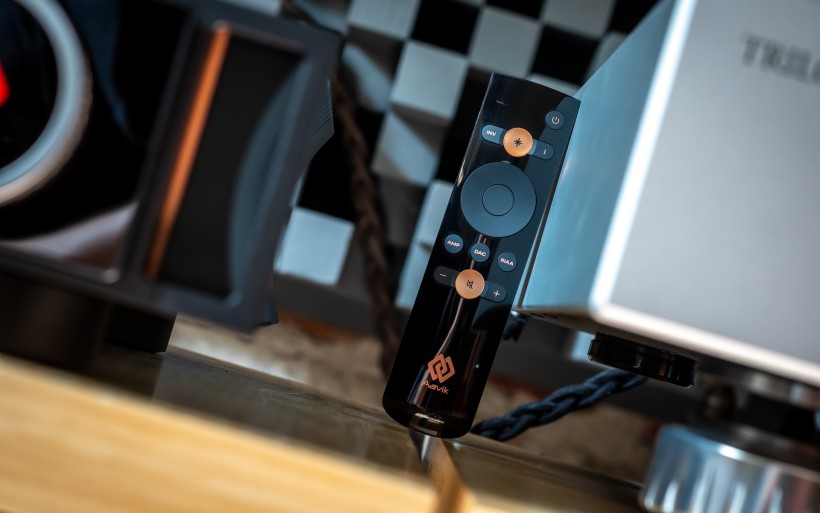 Aavik U-188 measures (W x D x H) 440 x 430 x 116mm and weighs 22.8kg, so is regularly sized yet fairly short and very heavy considering its reasonable footprint. It also does 300/600wpc into 8/4Ω and boasts output impedance low enough to secure DF values in the ballpark of 350 or so. This is no pushover. It’ll gladly accommodate inefficient modern speakers, courtesy of Pascal L-PRO2 UMAC class D module inside it. This switching heart also explains the U-188’s cool MO under stress, high stability and silence on speakers without playback. The product reports full readiness for action some 30 seconds after powering it on, which is largely due to the streamer inside it that takes a while to engage. Further specs list THD+N <0.0028% (1W, 1kHz, 8Ω), IMD/TIM below 0.0008%/0.002% (10W, 8Ω), 7.5Vrms max. output, line stage THD below 0.005% (1kHz, 1V) and standby/idle power draw respectively below 1/30W. Digital inputs work with native PCM up to 24-bit/192kHz on S/PDIF, while USB accepts data up to 32-bit/384kHz. DSD playback up to x128 is supported via USB. The streamer circuit inside this report’s subject is the ConversDigital platform that uses either mconnect app on iOS/Android smartphones, or Aavik’s own software on iPad. It supports UPnP, DLNA, Spotify Connect, Tidal Connect and also has the Roon-ready status.
Aavik U-188 measures (W x D x H) 440 x 430 x 116mm and weighs 22.8kg, so is regularly sized yet fairly short and very heavy considering its reasonable footprint. It also does 300/600wpc into 8/4Ω and boasts output impedance low enough to secure DF values in the ballpark of 350 or so. This is no pushover. It’ll gladly accommodate inefficient modern speakers, courtesy of Pascal L-PRO2 UMAC class D module inside it. This switching heart also explains the U-188’s cool MO under stress, high stability and silence on speakers without playback. The product reports full readiness for action some 30 seconds after powering it on, which is largely due to the streamer inside it that takes a while to engage. Further specs list THD+N <0.0028% (1W, 1kHz, 8Ω), IMD/TIM below 0.0008%/0.002% (10W, 8Ω), 7.5Vrms max. output, line stage THD below 0.005% (1kHz, 1V) and standby/idle power draw respectively below 1/30W. Digital inputs work with native PCM up to 24-bit/192kHz on S/PDIF, while USB accepts data up to 32-bit/384kHz. DSD playback up to x128 is supported via USB. The streamer circuit inside this report’s subject is the ConversDigital platform that uses either mconnect app on iOS/Android smartphones, or Aavik’s own software on iPad. It supports UPnP, DLNA, Spotify Connect, Tidal Connect and also has the Roon-ready status.
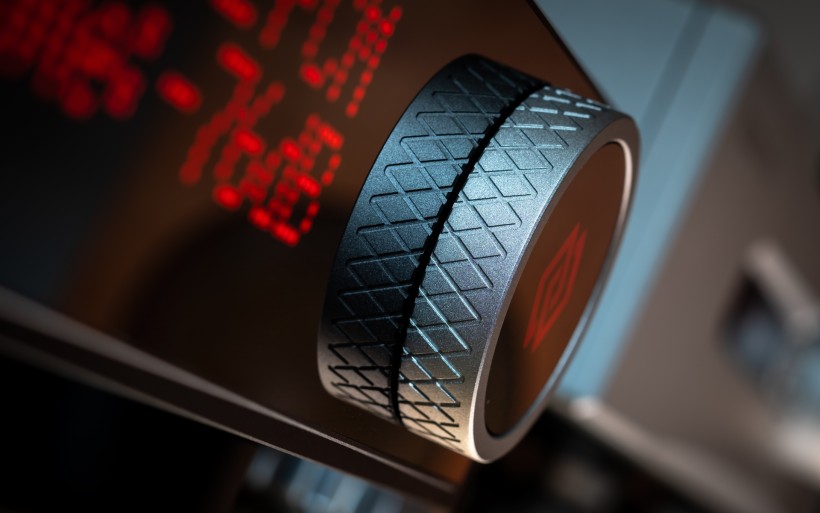 In the Aavik catalog, the range U represents unity amplifiers, so multitasking AiO (all-in-one) designs that pack a streamer, DAC, pre and stereo power amp in the same cabinet. These utilities effectively brand U-188 as the modern center piece of a minimalist one-box system that demands only speakers and LAN access to get going, so not a tall order by any stretch. Many seasoned audiophiles won’t fancy the general concept. Their kind including yours truly needs boxes, the more the merrier. Integration ain’t for us, but no matter. Products such as U-188 have their own appeal and target audience regardless. This AiO affair winks at financially sorted aficionados who wish to build their second system, most likely in a living room’s TV area, and share it with other family members who can easily operate it from their smartphones. Such clients are used to high performance and adequate expenses, so their investment has to deliver on that score even if it’s meant for casual listening in non-audiophile spaces. While the manufacturer’s track record warrants sonic competence, it remains to be seen how good U-188 truly is. Considering its sticker and posh pedigree, it’s also fair to ask whether this may be a prospect for audio veterans ready to retire from this hobby and downscale their setups to just one high-tiered do-it-all box that looks very handsome to boot. Let’s not pretend that this is not important. We buy this stuff with our eyes as much as ears. That said, quite a few people may agree that the very much I-880-alike Aavik U-188 is exceptional on that front.
In the Aavik catalog, the range U represents unity amplifiers, so multitasking AiO (all-in-one) designs that pack a streamer, DAC, pre and stereo power amp in the same cabinet. These utilities effectively brand U-188 as the modern center piece of a minimalist one-box system that demands only speakers and LAN access to get going, so not a tall order by any stretch. Many seasoned audiophiles won’t fancy the general concept. Their kind including yours truly needs boxes, the more the merrier. Integration ain’t for us, but no matter. Products such as U-188 have their own appeal and target audience regardless. This AiO affair winks at financially sorted aficionados who wish to build their second system, most likely in a living room’s TV area, and share it with other family members who can easily operate it from their smartphones. Such clients are used to high performance and adequate expenses, so their investment has to deliver on that score even if it’s meant for casual listening in non-audiophile spaces. While the manufacturer’s track record warrants sonic competence, it remains to be seen how good U-188 truly is. Considering its sticker and posh pedigree, it’s also fair to ask whether this may be a prospect for audio veterans ready to retire from this hobby and downscale their setups to just one high-tiered do-it-all box that looks very handsome to boot. Let’s not pretend that this is not important. We buy this stuff with our eyes as much as ears. That said, quite a few people may agree that the very much I-880-alike Aavik U-188 is exceptional on that front.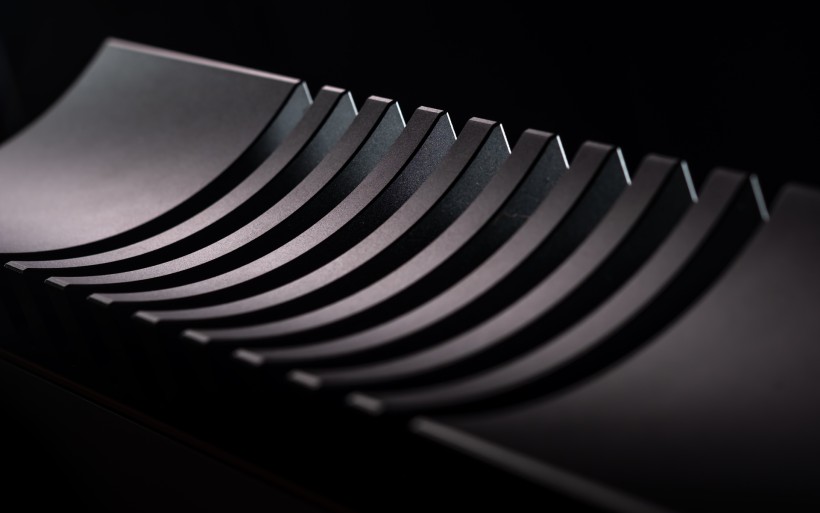 At Audio Group Denmark aluminium is forbidden, while titanium, zirconium, copper and dense wood-infused resin boards are cherished due to their mechanical and shielding properties. Even though it is somewhat simpler in comparison to the I-880 flagship, Aavik U-188 still makes that point more than well. Its rectangular steel front with handlebars on the sides is mainly busy with a large acrylic red dot matrix screen that’s perfectly readable from afar. A massive volume/source selection knob on the far right features a knurled titanium outer piece that’s nice upon touch and pure joy to use. It rotates endlessly, feels substantial, has minimal resistance and operates like a high-quality fidget spinner. I honestly don’t think that this part of the U-188’s physical UI could be done any better. The large brand logo in the middle of that rotary is the key focal point that remains always lit and doesn’t move, which I think is visually clever and thoughtful. Three touch buttons incorporated in the screen’s left side are the standby on/off that also doubles as the arrow up, then there’s the mute/arrow down below it and input/menu selector on the bottom. The menu allows a user to set display brightness (10/40/70 and 100%), dim it, change channel balance, monitor temperature, set the home theatre bypass input and its level, engage gapless playback, check network status, streamer firmware, OS version and wifi signal strength, do firmware update and factory reset. Lastly, upon connecting a wifi dongle we can also scan wireless networks and connect to them. The available options are generous given the product type and personally I didn’t miss anything specific.
At Audio Group Denmark aluminium is forbidden, while titanium, zirconium, copper and dense wood-infused resin boards are cherished due to their mechanical and shielding properties. Even though it is somewhat simpler in comparison to the I-880 flagship, Aavik U-188 still makes that point more than well. Its rectangular steel front with handlebars on the sides is mainly busy with a large acrylic red dot matrix screen that’s perfectly readable from afar. A massive volume/source selection knob on the far right features a knurled titanium outer piece that’s nice upon touch and pure joy to use. It rotates endlessly, feels substantial, has minimal resistance and operates like a high-quality fidget spinner. I honestly don’t think that this part of the U-188’s physical UI could be done any better. The large brand logo in the middle of that rotary is the key focal point that remains always lit and doesn’t move, which I think is visually clever and thoughtful. Three touch buttons incorporated in the screen’s left side are the standby on/off that also doubles as the arrow up, then there’s the mute/arrow down below it and input/menu selector on the bottom. The menu allows a user to set display brightness (10/40/70 and 100%), dim it, change channel balance, monitor temperature, set the home theatre bypass input and its level, engage gapless playback, check network status, streamer firmware, OS version and wifi signal strength, do firmware update and factory reset. Lastly, upon connecting a wifi dongle we can also scan wireless networks and connect to them. The available options are generous given the product type and personally I didn’t miss anything specific.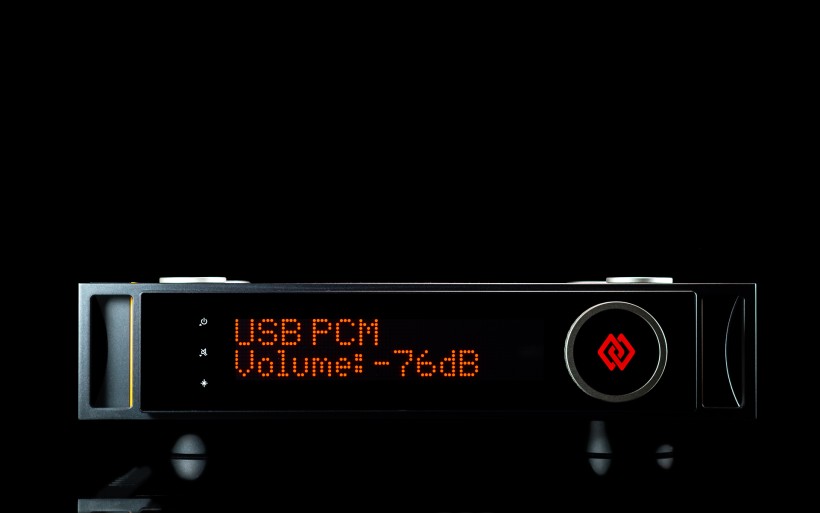 I’d argue that the Aavik U-188’s concave cheeks look fair bit nicer than their convex counterparts in the I-880 design, but that’s just me. More importantly, they connect to the internal housing built upon thick copper walls that fully shield electronics therein from the outside world. In the past this fancy anti-EMI/RFI compartment was reserved only for top-shelf 5xx-series Aaviks. Now the manufacturer’s entire lineup has it as the standard. The U-188’s bonnet and underside comprise a hefty wood-based laminate in-between an external steel layer and internal copper plate. This sandwich construction is the manufacturer’s well-known way of taming unwanted mechanical resonances and airborne interference. Four round inserts installed on the hood can accommodate another Aavik electronic kit of your choice either directly or via the optional Ansuz Darkz decouplers. The former connection requires a dozen ball bearings, the latter wants twice as many. Aavik U-188 sits on four massive internally hollow footers ready to accept Ansuz Darkz, albeit in such a way that these separately sold pucks remain almost entirely hidden upon installing yet still maintain contact with a rack’s shelf. Today’s business end features fairy regular speaker posts, between which we see a fused IEC inlet with the main on/off rocker just next to the RS-232 port for OS updates, trigger output and twin USB type A inputs for external storage devices and wifi dongles. Further to the right locates a LAN socket, four digital inputs (USB, 2 x BNC S/PDIF and Toslink), two line inputs and one preamp out. I think that these utilities cover most, if not all, scenarios for using the U-188.
I’d argue that the Aavik U-188’s concave cheeks look fair bit nicer than their convex counterparts in the I-880 design, but that’s just me. More importantly, they connect to the internal housing built upon thick copper walls that fully shield electronics therein from the outside world. In the past this fancy anti-EMI/RFI compartment was reserved only for top-shelf 5xx-series Aaviks. Now the manufacturer’s entire lineup has it as the standard. The U-188’s bonnet and underside comprise a hefty wood-based laminate in-between an external steel layer and internal copper plate. This sandwich construction is the manufacturer’s well-known way of taming unwanted mechanical resonances and airborne interference. Four round inserts installed on the hood can accommodate another Aavik electronic kit of your choice either directly or via the optional Ansuz Darkz decouplers. The former connection requires a dozen ball bearings, the latter wants twice as many. Aavik U-188 sits on four massive internally hollow footers ready to accept Ansuz Darkz, albeit in such a way that these separately sold pucks remain almost entirely hidden upon installing yet still maintain contact with a rack’s shelf. Today’s business end features fairy regular speaker posts, between which we see a fused IEC inlet with the main on/off rocker just next to the RS-232 port for OS updates, trigger output and twin USB type A inputs for external storage devices and wifi dongles. Further to the right locates a LAN socket, four digital inputs (USB, 2 x BNC S/PDIF and Toslink), two line inputs and one preamp out. I think that these utilities cover most, if not all, scenarios for using the U-188. One year ago I was amazed at how well the I-880 integrated was put together. On dress code and material selection it truly was second to none. This time ain’t any different. Although Aavik U-188 is a significantly more affordable effort packed with acrylic front and steel bits instead of tempered glass and titanium, on sheer fit ‘n’ finish it clearly belongs to the same very high league. It looks, feels and operates like a very costly audio product. In these regards, its superiority in comparison to the previous-gen siblings is evident. As the new kid on the block, U-188 also houses the manufacturer’s latest-gen noise-rejecting tech in the form of 36x/72x active/squared Tesla coils on their own PCB. Both these parts work in parallel to the signal circuits and accordingly to the same principle. When one coil leg encounters a voltage spike, the other immediately activates a counter-spike and eliminates incoming noise in the process. On the same board also locate three scalar dithering ICs, which modulate ground noise floor by injecting precisely defined squared frequencies into signal, somewhat similarly to how marine sonars operate. The company’s anti-aerial resonance coils near speaker terminals now comprise gold-coated coils wound around zirconium rods. Pascal class-D UMAC L-PRO2 stereo power amp module with embedded PSU for it was cherry-picked due to its high output power, PWM block that generates sine not triangle wave to decrease UHF noise, and also feedback applied after low-pass filtering coils, which significantly lowers the design’s output impedance. The laminate just next to the i/o features one of the latest Sabre DACs, while a USB receiver and power supply for it enjoy their own separate screens. The ConversDigital streamer module piggybacked on that board is the new utility that the previous-gen Aavik unity amplifiers didn’t have. Lastly, volume attenuation is executed in a resistor ladder inside a dedicated chip, so in the analog domain. Now let’s see how all this translates to sonics.
One year ago I was amazed at how well the I-880 integrated was put together. On dress code and material selection it truly was second to none. This time ain’t any different. Although Aavik U-188 is a significantly more affordable effort packed with acrylic front and steel bits instead of tempered glass and titanium, on sheer fit ‘n’ finish it clearly belongs to the same very high league. It looks, feels and operates like a very costly audio product. In these regards, its superiority in comparison to the previous-gen siblings is evident. As the new kid on the block, U-188 also houses the manufacturer’s latest-gen noise-rejecting tech in the form of 36x/72x active/squared Tesla coils on their own PCB. Both these parts work in parallel to the signal circuits and accordingly to the same principle. When one coil leg encounters a voltage spike, the other immediately activates a counter-spike and eliminates incoming noise in the process. On the same board also locate three scalar dithering ICs, which modulate ground noise floor by injecting precisely defined squared frequencies into signal, somewhat similarly to how marine sonars operate. The company’s anti-aerial resonance coils near speaker terminals now comprise gold-coated coils wound around zirconium rods. Pascal class-D UMAC L-PRO2 stereo power amp module with embedded PSU for it was cherry-picked due to its high output power, PWM block that generates sine not triangle wave to decrease UHF noise, and also feedback applied after low-pass filtering coils, which significantly lowers the design’s output impedance. The laminate just next to the i/o features one of the latest Sabre DACs, while a USB receiver and power supply for it enjoy their own separate screens. The ConversDigital streamer module piggybacked on that board is the new utility that the previous-gen Aavik unity amplifiers didn’t have. Lastly, volume attenuation is executed in a resistor ladder inside a dedicated chip, so in the analog domain. Now let’s see how all this translates to sonics.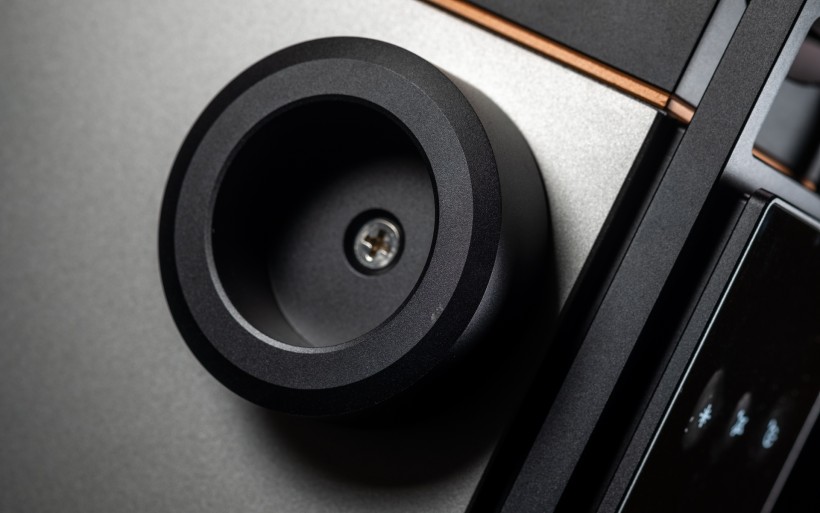 Prior to evaluating Aavik U-188 I asked myself how potential clients would use it. I assumed that they would simply connect this device to a router and speakers, then stream music from Tidal or Spotify via the control app on their smartphones and that’s it. I followed accordingly. In my listening room the U-188 loaner worked solely as a do-it-all device that saw the mandatory power cord, outlet multiplier, speaker cables and floorstanders, but nothing else. I also relied on a thumb drive loaded with a selection of tracks which I use daily to evaluate all audio products sent my way. The mconnect iOS app was the handy RC interface, while Boenicke W11 SE+ were the target load. It also was the only speaker set I really needed this time around.
Prior to evaluating Aavik U-188 I asked myself how potential clients would use it. I assumed that they would simply connect this device to a router and speakers, then stream music from Tidal or Spotify via the control app on their smartphones and that’s it. I followed accordingly. In my listening room the U-188 loaner worked solely as a do-it-all device that saw the mandatory power cord, outlet multiplier, speaker cables and floorstanders, but nothing else. I also relied on a thumb drive loaded with a selection of tracks which I use daily to evaluate all audio products sent my way. The mconnect iOS app was the handy RC interface, while Boenicke W11 SE+ were the target load. It also was the only speaker set I really needed this time around.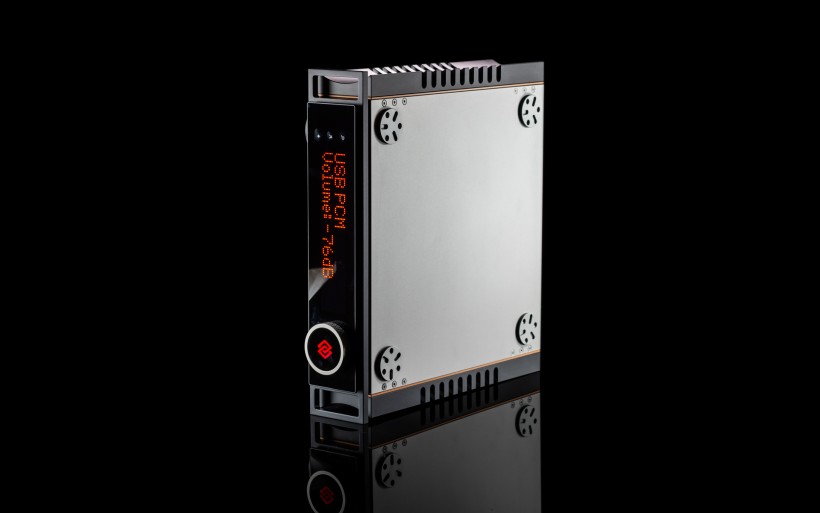 In one of my previous reviews I wrote that: “…ported bass is a wide subject. Some speakers do it better than others. Although Boenicke W11 SE+ floorstanders feature narrow venting slots on the rear, you couldn’t tell upon connecting them to a powerful amp with very low output impedance. Then the Boenicks hit very hard, reach very low and develop enough edges and composure downstairs to behave like a sealed box busy with a large bass cone or two.” Long story short, U-188 brilliantly fits this profile and is the amp in question. While Trilogy 995R monos do 200/350wpc into 8/4Ω respectively, their output impedance is significantly higher than the Aavik’s, which translates into their lesser control over a woofer’s rear strokes. One rapid bass-intense track fully sufficed to map which amp of the two at my disposal was the significantly better match for the W11 SE+. Today’s machine had just the ideal blend of traits to correctly support these floorstanders, in the sense that their core voice was presented accordingly to their maker’s intent. In fact, this is the very reason why Sven Boenicke has been vocal about his speakers’ fondness for class-D amps. He simply knows that they truly thrive on copious output power and damping. As far as his speaker designs are concerned, mechanical compliance always goes above money. A while ago the Axxess AiO connected to my daily driver already communicated this. The U-188 with much higher mandatory specs and far dearer sticker simply was expected to do way more atop that with the same load.
In one of my previous reviews I wrote that: “…ported bass is a wide subject. Some speakers do it better than others. Although Boenicke W11 SE+ floorstanders feature narrow venting slots on the rear, you couldn’t tell upon connecting them to a powerful amp with very low output impedance. Then the Boenicks hit very hard, reach very low and develop enough edges and composure downstairs to behave like a sealed box busy with a large bass cone or two.” Long story short, U-188 brilliantly fits this profile and is the amp in question. While Trilogy 995R monos do 200/350wpc into 8/4Ω respectively, their output impedance is significantly higher than the Aavik’s, which translates into their lesser control over a woofer’s rear strokes. One rapid bass-intense track fully sufficed to map which amp of the two at my disposal was the significantly better match for the W11 SE+. Today’s machine had just the ideal blend of traits to correctly support these floorstanders, in the sense that their core voice was presented accordingly to their maker’s intent. In fact, this is the very reason why Sven Boenicke has been vocal about his speakers’ fondness for class-D amps. He simply knows that they truly thrive on copious output power and damping. As far as his speaker designs are concerned, mechanical compliance always goes above money. A while ago the Axxess AiO connected to my daily driver already communicated this. The U-188 with much higher mandatory specs and far dearer sticker simply was expected to do way more atop that with the same load.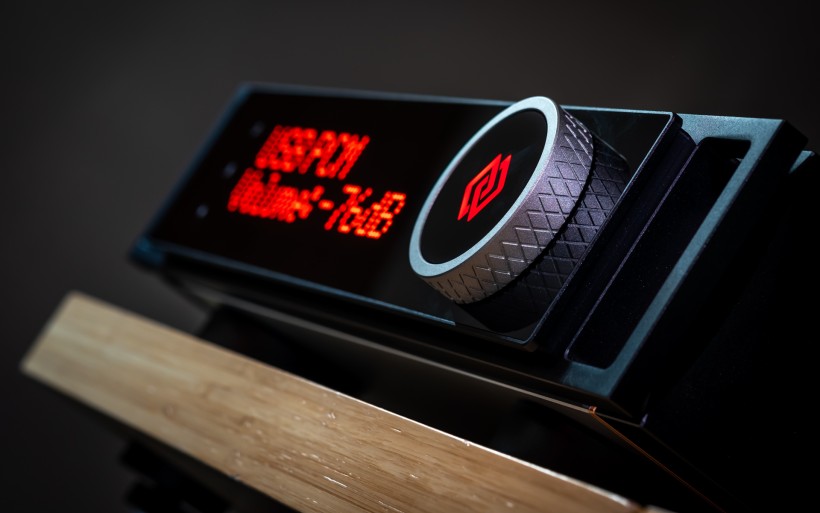 And it did, but first things first. When connected to the Aavik not Trilogy monos, W11 SE+ produced bass that dug deeper, was sensibly more controlled, punctual and cleaner. The usual residual bloat and fuzz didn’t register. The balance between contour, textural fill and overall gravitas was maintained to a point where I had no reasons to complain. The Swiss speaker set gladly flaunted its tectonic prowess, elasticity and articulation, so traits which naturally boosted the sensation of spatial liberation, might, shove, scale, openness and directness. That’s exactly how it should be. There and then W11 SE+ floorstanders once more proved extremely gifted on bass that hadn’t become the key focal point but the very foundation for all above it. To simplify, these speakers can sound truly gargantuan imaging wise only when they’re sorted downstairs. The Aavik fully secured that feeling, 995Rs not quite as much. While these mono amps are sublime with high-eff speakers all across the board, with the W11 SE+ they produced bass that was lazier, shallower and bloomier, so consequently the entire perspective was a bit smaller, stuffier and not as radiant and lucid.
And it did, but first things first. When connected to the Aavik not Trilogy monos, W11 SE+ produced bass that dug deeper, was sensibly more controlled, punctual and cleaner. The usual residual bloat and fuzz didn’t register. The balance between contour, textural fill and overall gravitas was maintained to a point where I had no reasons to complain. The Swiss speaker set gladly flaunted its tectonic prowess, elasticity and articulation, so traits which naturally boosted the sensation of spatial liberation, might, shove, scale, openness and directness. That’s exactly how it should be. There and then W11 SE+ floorstanders once more proved extremely gifted on bass that hadn’t become the key focal point but the very foundation for all above it. To simplify, these speakers can sound truly gargantuan imaging wise only when they’re sorted downstairs. The Aavik fully secured that feeling, 995Rs not quite as much. While these mono amps are sublime with high-eff speakers all across the board, with the W11 SE+ they produced bass that was lazier, shallower and bloomier, so consequently the entire perspective was a bit smaller, stuffier and not as radiant and lucid.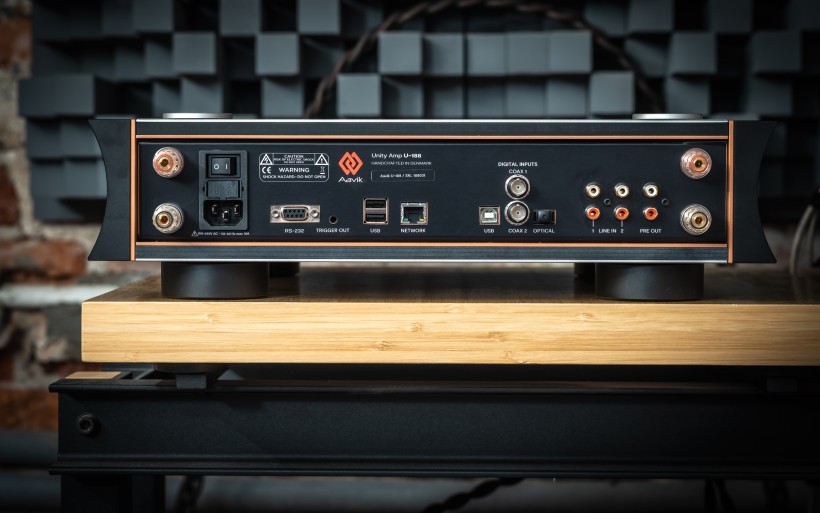 In my Axxess review I wrote that Boenicke W11 SE+: “…embeds several drivers yet goes about its business largely in the point-source fashion. Exceptional openness, quickness, freshness and illumination are in fact its primary traits. High-tiered spatial accuracy, precision and resolution follow, but at a small cost paid in substance. In short, the Boenicks benefit from companion amps which inject the extra body and tone into their naturally somewhat lean profile. Trilogy 995R monos ooze color and tonal mass left right and center, so provide exactly what’s useful in a rather marvelous manner.” Modern class-D amps aren’t shy on this specific front either. Audio Group Denmark electronics, be it Axxess or Aavik, surround these circuits with in-house developed bits meant to lower their noise floor. That pays dividends in sound that is inherently sporty alright, but also juicy, earthy, packed with color and even a touch soft and warm. Just as the Axxess was before it, Aavik U-188 is the manufacturer’s yet another class-D design that’s not dry, pale, mechanical or lean in the slightest. If a recording allows, you won’t hear it overdone on shine, pointy, piercing or brittle. Fatigue won’t be invited either. In my room this AiO was clueless how to do any of these undesirable things.
In my Axxess review I wrote that Boenicke W11 SE+: “…embeds several drivers yet goes about its business largely in the point-source fashion. Exceptional openness, quickness, freshness and illumination are in fact its primary traits. High-tiered spatial accuracy, precision and resolution follow, but at a small cost paid in substance. In short, the Boenicks benefit from companion amps which inject the extra body and tone into their naturally somewhat lean profile. Trilogy 995R monos ooze color and tonal mass left right and center, so provide exactly what’s useful in a rather marvelous manner.” Modern class-D amps aren’t shy on this specific front either. Audio Group Denmark electronics, be it Axxess or Aavik, surround these circuits with in-house developed bits meant to lower their noise floor. That pays dividends in sound that is inherently sporty alright, but also juicy, earthy, packed with color and even a touch soft and warm. Just as the Axxess was before it, Aavik U-188 is the manufacturer’s yet another class-D design that’s not dry, pale, mechanical or lean in the slightest. If a recording allows, you won’t hear it overdone on shine, pointy, piercing or brittle. Fatigue won’t be invited either. In my room this AiO was clueless how to do any of these undesirable things. 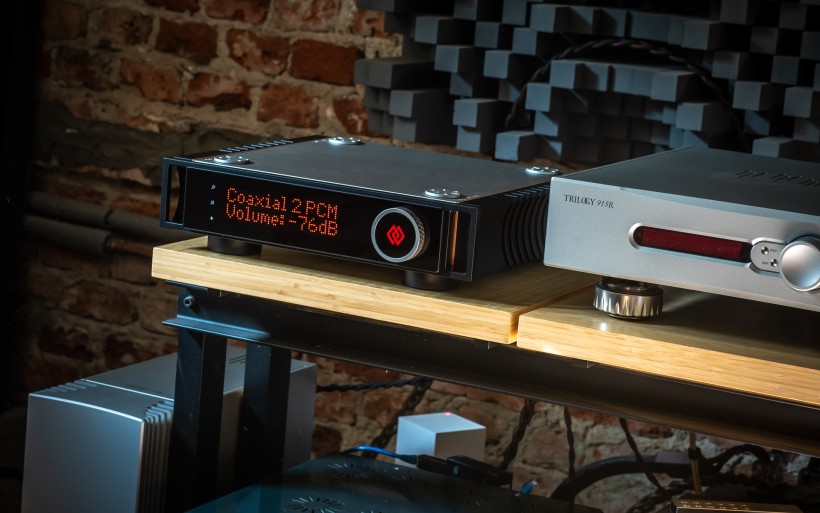 Should you wonder about the sonic differences between this report’s device and its 4x more affordable Axxess sibling that largely does the same, there are two. The Aavik has the clear upper hand on speed, control, oxygenation and dynamics, which is only natural considering its beefier engine and power reserve on tap. At the same time this AiO also leans noticeably more towards assets that make music expressive and pleasant to listen to in the first place; wide intense color range, smoothness, textural heft, inky backdrop, high spatial complexity, articulation and resolution, tangible instrumental and vocal outlines and the connective tissue between them. To simplify, the Aavik can go faster than Axxess and still look significantly hotter whilst doing so. Fancier electronics inside it are one reason, but I also think that the audible shift towards the listed traits is largely the byproduct of the new copper-infused enclosure design that supports everything inside it. To Danes it doesn’t matter whether the incoming noise is aerial or electrical. They see it as the well-known culprit either way and are quite obseesed about stripping as much of it away from signal as possible, so that we get to enjoy more music in return. The U-188 proved very capable on that particular score and that’s mighty impressive already. That it did so atop its naturally very snappy backbone, even more so. Let’s wrap.
Should you wonder about the sonic differences between this report’s device and its 4x more affordable Axxess sibling that largely does the same, there are two. The Aavik has the clear upper hand on speed, control, oxygenation and dynamics, which is only natural considering its beefier engine and power reserve on tap. At the same time this AiO also leans noticeably more towards assets that make music expressive and pleasant to listen to in the first place; wide intense color range, smoothness, textural heft, inky backdrop, high spatial complexity, articulation and resolution, tangible instrumental and vocal outlines and the connective tissue between them. To simplify, the Aavik can go faster than Axxess and still look significantly hotter whilst doing so. Fancier electronics inside it are one reason, but I also think that the audible shift towards the listed traits is largely the byproduct of the new copper-infused enclosure design that supports everything inside it. To Danes it doesn’t matter whether the incoming noise is aerial or electrical. They see it as the well-known culprit either way and are quite obseesed about stripping as much of it away from signal as possible, so that we get to enjoy more music in return. The U-188 proved very capable on that particular score and that’s mighty impressive already. That it did so atop its naturally very snappy backbone, even more so. Let’s wrap.
Aavik U-188 may seem a very tough sell at first glance. Shoppers interested in such products are largely casual listeners. To them the far more affordable Axxess packed with the same utility kit is plenty posh already, while enthusiasts used to large audio expenses pursue separates anyway and don’t take AiOs seriously. Meanwhile, Aavik U-188 exists and remains unfazed. Visually stunning, adequately voiced and artfully put together, it represents progress that is hard to deny. With matched speakers nearby, this luxurious do-it-all affair has what it takes to outshine many conventional multi-box systems with disturbing ease. So much so that I wouldn’t mind having it around when my reviewer days are over. I also think that many conservative audiophiles not crazy about the AiO concept would thoroughly enjoy this machine, too.
Associated Equipment:
- Amplifier: Trilogy 995R, FirstWatt F7, Enleum AMP-23R
- DAC: LampizatOr Horizon360 (Stradi 5U4G + Psvane Art TIII 4x KT88 / 2x 6SN7)
- Speakers: Boenicke Audio W11 SE+, sound|kaos Vox 3afw
- Transport: Innuos Statement, fidata HFAS1-S10U
- Preamplifier: Trilogy 915R, Thöress DFP
- Speaker cables: Boenicke Audio S3, LessLoss C-MARC
- Headphones: HifiMan Susvara
- Speaker signal conditioning: LessLoss Firewall for Loudspeakers, Boenicke ComDev
- Anti-vibration conditioning: 6x Carbide Base Diamond (under streamer), 6x Carbide Base Micro Diamond with TwinDamp inserts and spikes (under DAC and pre), Vibra 68 (under speakers)
- Interconnects: LessLoss Entropic Process C-MARC, Boenicke Audio IC3 CG
- Power components: Gigawatt PC-3 SE EVO+/LC-3 EVO, LessLoss C-MARC, LessLoss Entropic C-MARC, LessLoss Stellar C-MARC, LessLoss Power Distributor into Boenicke Audio Power Gate, ISOL-8 Prometheus
- USB components: AudioPhonique Desire USB
- Rack: Franc Audio Accesories Wood Block Rack 1+3
- Network: Fidelizer EtherStream, Linksys WRT160N
- Music: NativeDSD
Retail prices of reviewed components in EU (incl. VAT):
- Aavik U-188/U-288/U-588: €20’000/€25’000/€30’000
Manufacturer: Aavik


